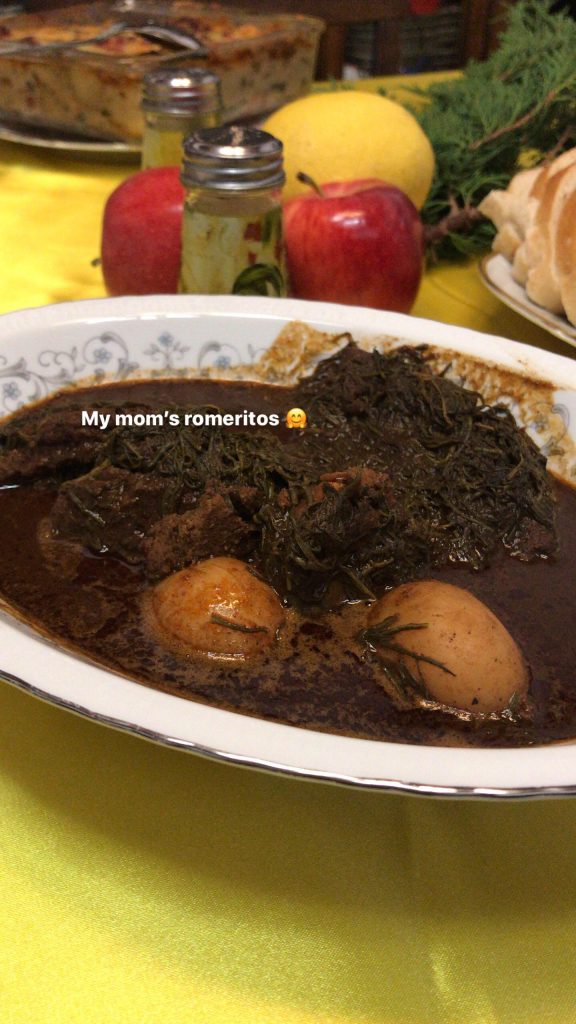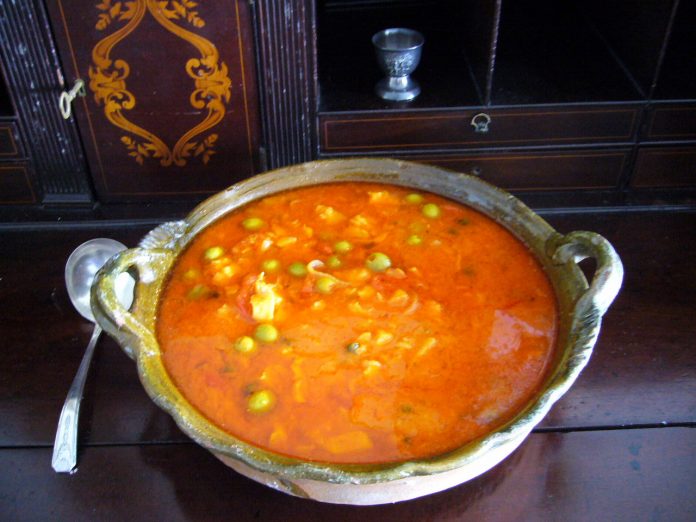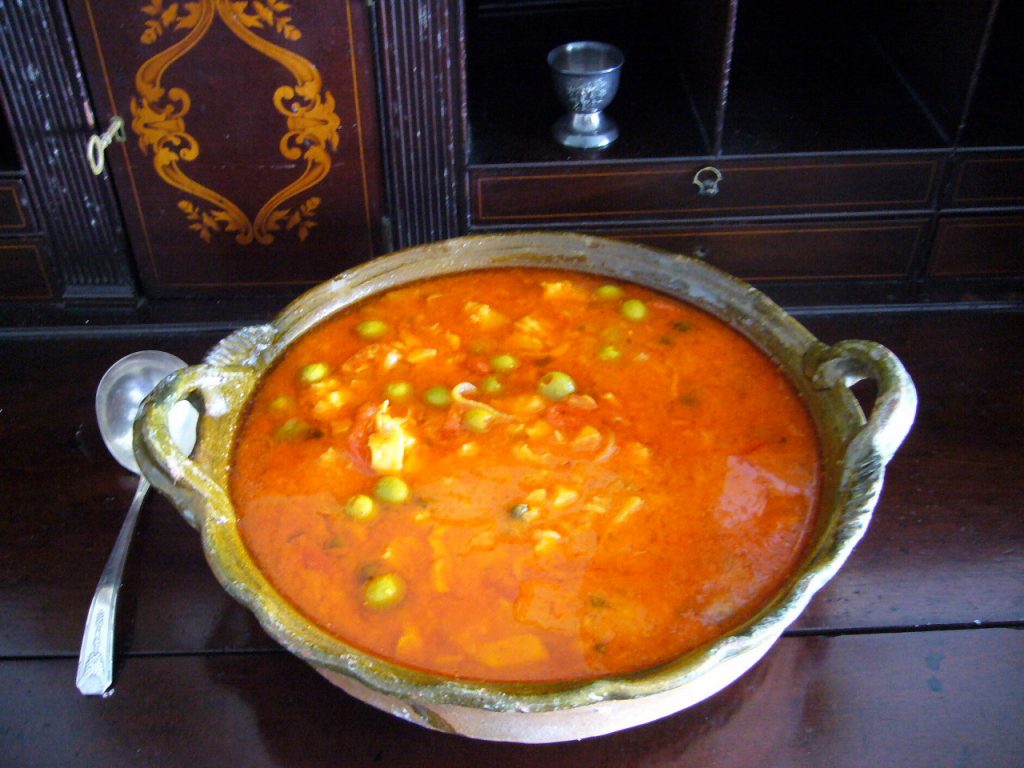If you follow social and traditional media, you probably think Mexicans ride a wave of tamales from about the Feast Day of the Virgin of Guadalupe all the way through Super Bowl Sunday — and then you freeze the leftover tamales so you can #TamaleTuesday the rest of the year.
So I’m not surprised when many of my friends of all ethnicities get flabbergasted when I mention that my family doesn’t.
Some even get offended. How dare does my family not do eat tamales for Christmas? “Azu, what do you guys eat?”
Well, we do love tamales, but really on just two days during the winter holidays. We make them for December 12 to commemorate the Day of the Virgin of Guadalupe, and again on February 2 — what Mexican Catholics call Dia de la Candelaria, and English-speaking ones know as Candlemas.
But the true culinary focus of my family’s holiday season is Christmas Eve, when my mom gets out her expensive linens and dishware out of the dining room hutch. Only the best for her elaborate dinner of bacalao a la vizcaína (Basque-style codfish) and romeritos (tender sprigs of seepweed, not to be confused with rosemary).
They’re the traditional Navidad supper of Cuernavaca, Morelos, a city roughly an hour away from Mexico City, and where my family is from.
A week or so before Christmas, my mom roams local markets to get all of the ingredients she needs. For the bacalao: tomatoes, olive oil, capers, green olives, and banana peppers. Because of its saltiness, she soaks the cod in water for at least three days, drains and adds fresh water every eight hours. She then removes the scales, bones, and shreds what’s left to cook with all the ingredients. If soaked for enough time, the fish transforms from salty to savory, which goes perfect with a telera or bolillo.
Romeritos, meanwhile, is a pre-Hispanic dish traditional to not just Christmas but also Lent. Its ingredients are mole paste, small potatoes, nopales, and shrimp cakes. You have to cut through the stems of the romeritos, a tedious process that can take hours, depending on how many people you plan on feeding.
The two are dishes that requires extra labor and an acquired taste. My sister’s gabacho husband has been in the family for ten years, and while he loves most Mexican food, bacalao nor romeritos are not something he likes to eat. And my siblings don’t like them, either.
But I love them. They’re not just delicious — the bacalao is like an upgraded tuna with a kick, while romeritos are sweet and earthy — but tradition.
A tradition that both sides of my family have fought like hell to maintain for over 30 years in the United States, against the tamale onslaught.
**
It started with my paternal grandmother, Carmen.
While my mom and dad got divorced when I was three, my abuelita Carmelita stayed in touch with my mom. 20-some years ago, she visited the family in Oakland and ended up staying with us for six months.
That year, my mom asked her for her bacalao recipe. My mom talks about how happy it made my grandma that my mom wanted to learn the recipe — and how it was almost impossible to pull off.
Back then, cod was almost impossible to find in Oakland — and romeritos were even harder to track down. Mom finally found her fish at an Italian market, but my mom had to scout different stores every year for romeritos because there were not that many people from Mexico City, Puebla, or Cuernavaca in the Bay back then. She had to save up money to make bacalao and romeritos, and still does — while cod is far more affordable now, romeritos still go for about $20 a pound.
And you need at least five pounds to get a good meal out of them. (I’m still shocked that this decolonized dish hasn’t become more popular in the U.S. considering how the plant-based movement has gained such popularity in recent years.)

Every Christmas, I would message my grandma to let her know that my mom had (once again) made her famous bacalao — first, a phone call on a landline, and in recent years via text. Despite the distance, I knew that my grandma appreciated my mom for keeping her recipe around.
Romeritos, meanwhile, is a dish that has been in my mom’s side of the family since at least my great-grandma. When my grandma Lupe was still able to cook, she was the one who tended to the mole sauce, simmered the romeritos, and molded the perfect tortitas de camarones (shrimp cakes). Now that she’s older and unable to cook, my mom handles the two dishes.
They’re time-consuming and delicious, which is why my mom sets almost a whole week before Christmas to get everything ready. But while both my mom and my grandma have tried to ensure that this Christmas tradition doesn’t die with them, my siblings are simply not interested, so the bacalao and romeritos are really just for three people.
My mom doesn’t force them to eat, and instead always makes other dishes to compensate: ham, raviolis, or roast pork.
“Yo creo que el sabor es muy fuerte y por eso no les gusta” — I think the flavor is too much for them, my mom says as bacalao simmers on the stove. But I can hear it in her voice. She wishes that, like me, her other children enjoy eating these two dishes as much as my mom, grandma and I do.
In the U.S., the more assimilated we become, the more “American” we become — even for Mexicans. Our regional identities diminish into a Mexican monolith.
We know our traditions are endangered. My grandma Carmelita passed away last May, so this past Christmas was the first time without talking to her about her bacalao.
“Si no aprendes a hacer los romeritos y el bacalao, quien te los va a preparar cuando me muera?” my mom said.
My goal is that next Christmas (God willing), I’ll tag along with my mom in the kitchen to learn how to make these two dishes. While my siblings might not like them, I hope to one day teach my nephews and nieces the the family stories behind both of them.
And hopefully, they can carry on the tradition of not eating tamales for Christmas.











